The world of metal fabrication is vast and intricate, but nothing is quite as fundamental as the press brake. A cornerstone in bending technology, the press brake transforms flat sheets of metal into functional and aesthetic masterpieces. But with numerous types of press brakes available, how do you decide which is perfect for your needs? Dive into our comprehensive guide and become a master of the metal!
- What is Press Brake
- Mechanical Press Brakes
- Hydraulic Press Brakes
- What are the Different Types of Hydraulic Press Brakes?
- Which is Better Mechanical or Hydraulic Press Brakes?
- Pneumatic Press Brakes
- All-electric press brakes
- CNC Press Brakes
- Tandem Press Brake
- Manual vs. CNC Press Brakes
- What Factors Should Be Considered When Choosing a Press Brake Type?
- How to Choose the Right Type of Press Brake For Your Needs?
- What are the Different Types of Press Brake Bends?
What is Press Brake?
If you've ever marveled at the intricacies of a metal structure, be it in machinery or in architecture, you've indirectly appreciated the work of a press brake. But what exactly is a press brake?
In simple terms, a press brake is a machine tool designed specifically for bending sheet and plate material, most commonly metal. They form predetermined bends by clamping the workpiece between a matching punch and die.
Think of it as the grand maestro in the symphony of metal fabrication. It carefully conducts every bend and fold, ensuring precision, which is quintessential in this field. From the bodywork of vehicles to the shells of your electronic gadgets, press brakes play a pivotal role in shaping the metal sheets that go into making these products.
Being such a crucial tool, it's no wonder that many press brake manufacturers have invested significant resources in advancing the technology behind these machines. Modern press brakes are now equipped with state-of-the-art features, ensuring efficient operations and high-quality results.
But here's the kicker: not all press brakes are created equal. There are several types of press brakes, each designed with specific operations in mind. And, if you're diving into the realm of metal fabrication or simply looking to better understand the tools behind your favorite products, knowing the different types of press brakes is essential. Luckily, that's exactly what we'll be delving into in the upcoming sections. So, buckle up, and let's navigate the fascinating world of press brakes together!
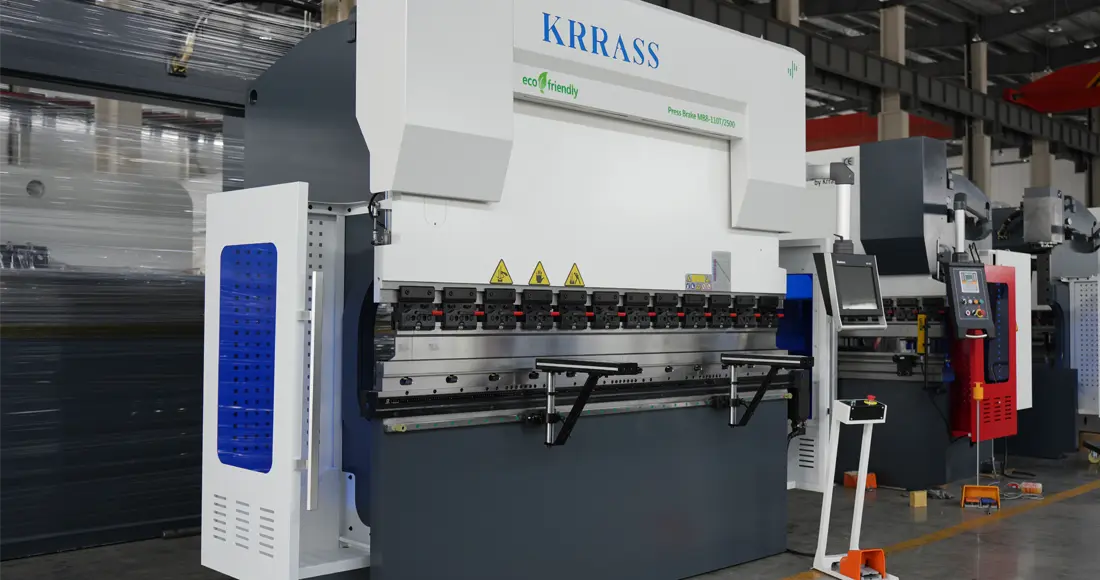
Mechanical Press Brakes
Among the different types of press brakes that have shaped the metal fabrication industry, mechanical press brakes stand out for their long-standing history and mechanical operations. Let's dive deeper into understanding this classic workhorse.
What types of materials are best suited for Mechanical Press Brakes?
Mechanical press brakes, given their inherent mechanical nature, are best suited for materials that require consistent, repetitive bends. They excel with materials such as mild steel, aluminum, brass, and some types of stainless steel. Their design allows them to handle medium to thick materials with relative ease, offering consistent bends with high accuracy.
Common Applications
Mechanical press brakes have been the backbone of many industries. Common applications include:
- Automotive parts: From car body panels to internal brackets and supports.
- Construction equipment: Shaping parts for bulldozers, cranes, and more.
- Household appliances: Forming the metal bodies of refrigerators, washers, and ovens.
- Furniture: Bending metal parts for chairs, tables, and bed frames.
ADVANTAGES
The benefits of using mechanical press brakes include:
- Consistency: They offer uniform bending, especially for repetitive tasks.
- Durability: These machines are built to last, often serving industries for decades.
- Cost-effective: Due to their simple design and fewer components, they're often more affordable than other types of press brakes.
- Efficiency: Their mechanical nature ensures rapid operations, especially for standard bends.
DISADVANTAGES
While mechanical press brakes have served industries commendably, they do come with certain limitations:
- Limited versatility: They might not be ideal for intricate or complex bending operations.
- Safety concerns: Given their mechanical operations, there's a higher risk factor involved if not used with caution.
- Maintenance: Their mechanical components might require regular upkeep and replacements.
- Energy consumption: Often, they might consume more energy compared to their modern counterparts.
Hydraulic Press Brakes
Stepping into the modern era of metal bending, hydraulic press brakes have revolutionized the industry with their precision, power, and versatility. Relying on hydraulic fluid to transmit force, these machines offer a unique set of advantages and applications.
What types of materials are best suited for Hydraulic Press Brakes?
Hydraulic press brakes are versatile in handling a wide range of materials, owing to their precision and power. They are particularly effective with harder metals such as high-tensile steel, carbon steel, and many varieties of stainless steel. Additionally, they're adept at handling both thin sheets and thicker plates, allowing for precise bends without causing material fatigue.
Common Applications
The capabilities of hydraulic press brakes have made them indispensable in numerous sectors. Their applications encompass:
- Aerospace: Crafting parts for aircraft, where precision is paramount.
- Shipbuilding: Forming large, robust parts for ships and maritime vessels.
- Energy sector: Crafting components for wind turbines, solar panels, and other renewable energy sources.
- Heavy machinery: Producing parts for industrial machines and equipment.
ADVANTAGES
The hydraulic press brakes bring a wealth of benefits to the table:
- Precision: Thanks to their hydraulic mechanism, they allow for highly accurate bends.
- Versatility: Capable of handling a wide array of materials and thicknesses.
- Power: Can exert significant force, allowing for bending of even the toughest materials.
- Operational safety: Comes with advanced safety features, reducing workplace accidents.
DISADVANTAGES
While hydraulic press brakes are highly valuable, they do have a few limitations:
- Maintenance: Hydraulic systems may require regular maintenance to ensure optimal functioning.
- Initial cost: Often more expensive than their mechanical counterparts due to advanced features.
- Operational speed: Might be slower than mechanical press brakes in certain scenarios.
- Hydraulic fluid: The need for hydraulic fluid can lead to potential leakages and environmental concerns if not managed properly.
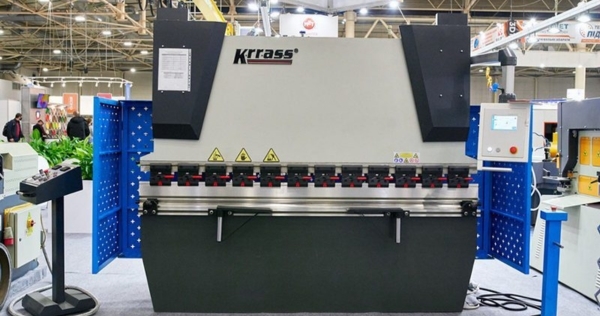
What are the Different Types of Hydraulic Press Brakes?
Hydraulic press brakes have evolved over the years, branching out into different types to cater to various industry needs. Two of the prominent types in this category are the Nut-stop hydraulic and Synchro hydraulic press brakes. Each comes with its set of features, making them suitable for specific applications.
Nut-stop Hydraulic Press Brakes
The Nut-stop hydraulic press brake, also known as the conventional hydraulic press brake, relies on a central hydraulic system to drive the ram (top beam). This system uses two hydraulic cylinders aligned with the ram, ensuring even pressure distribution during bending operations.
- Consistency: The dual-cylinder setup ensures even bending across the workpiece.
- Adaptability: Suitable for a wide range of materials and thicknesses.
- Maintenance: Due to its relatively simpler design, maintenance is more straightforward compared to other types.
- Reliability: Given its design, it's less prone to synchronization issues.
Synchro Hydraulic Press Brakes
The Synchro hydraulic press brake, as the name suggests, emphasizes the synchronization of its hydraulic cylinders. It utilizes advanced electronics and hydraulic systems to ensure that the ram's left and right sides move synchronously, achieving high precision bends.
- High Precision: Ensures perfect alignment and uniformity in bends.
- Efficiency: Faster operations due to optimal synchronization of hydraulic systems.
- Flexibility: Allows for micro-adjustments, ensuring optimal results for intricate bending tasks.
- Advanced Features: Often comes with programmable controls, allowing for automation and ease of use.
Which is Better: Mechanical or Hydraulic Press Brakes?
The debate between mechanical and hydraulic press brakes has been longstanding in the manufacturing sector. Both types come with their sets of advantages and limitations. Determining which one is "better" largely depends on the specific needs of a project and what aspects are more valued. Let's break down the differences to shed light on the matter.
Mechanical Press Brakes
Mechanical press brakes are driven by a mechanical flywheel which is then powered by an electric motor. Here are some of the features of mechanical press brakes:
- Speed: They generally operate faster than hydraulic systems.
- Consistency: Mechanical press brakes produce consistent bends across multiple cycles.
- Lower Initial Cost: These machines often have a lower upfront cost compared to hydraulic counterparts.
- Simplicity: Their design is relatively simpler, leading to easier troubleshooting.
Hydraulic Press Brakes
Hydraulic press brakes utilize hydraulic fluid to transmit force, ensuring that the machine can handle more robust and varied tasks. Here's what they offer:
- Versatility: Capable of handling a wider range of materials and thicknesses.
- Power: They can exert significant force, allowing for bending of even the toughest materials.
- Control: Allows for micro-adjustments, making it suitable for intricate bending tasks.
- Safety: Generally, they have more advanced safety features reducing the chance of operational mishaps.
Conclusion
When choosing between mechanical and hydraulic press brakes, one isn't universally better than the other. Instead, the decision boils down to the specific requirements of the operation. For tasks that require high-speed, consistent bends, a mechanical press brake might be more appropriate. Conversely, for versatile applications that involve varied materials, thicknesses, and require precise control, a hydraulic press brake would be the optimal choice. Understanding the nuances of each system and evaluating them against operational needs is crucial in making an informed decision.
Pneumatic Press Brakes
Pneumatic press brakes operate using compressed air to exert force on the ram, which in turn bends the material. Different from mechanical and hydraulic press brakes, pneumatic systems offer unique attributes and functions that are beneficial for specific tasks.
What Types of Materials Are Best Suited For?
Pneumatic press brakes are typically best suited for:
- Thin Metals: Such as aluminum, brass, and thin sheets of steel.
- Non-Metallic Materials: Plastics, rubbers, and certain types of composite materials.
Common Applications
Given their characteristics, pneumatic press brakes find utility in:
- Electronics Manufacturing: For bending and shaping parts of electronic gadgets and tools.
- Automotive Trimming: Especially for interior components made of thin metals and plastics.
- Small Component Production: For creating small parts in large quantities where consistent, repetitive action is required.
ADVANTAGES
Pneumatic press brakes come with several benefits:
- Eco-friendly: As they utilize air, they leave a smaller carbon footprint compared to hydraulic systems.
- Cost-Efficient: Lower operating costs since compressed air is cheaper than hydraulic oil.
- Low Maintenance: Fewer moving parts mean less wear and tear and, consequently, less maintenance.
- Quick Setup: Faster to set up for operations compared to hydraulic systems.
DISADVANTAGES
However, there are some limitations:
- Limited Force: Pneumatic systems generally can't exert as much force as hydraulic or mechanical systems, limiting their use to thinner materials.
- Air Quality Dependency: The quality of compressed air can affect operations. Moist or impure air can impact the machine's performance.
- Noisy Operations: Pneumatic systems can be louder than their hydraulic counterparts, which may require additional noise mitigation measures in certain environments.
All-electric Press Brakes
In the pantheon of bending machines, all-electric press brakes represent the pinnacle of technological advancement, merging precision with sustainability. Let's delve into how these marvels function and their myriad benefits.
How Does It Work?
At its core, the all-electric press brake utilizes servo motors to drive the ram (upper beam). This is how it unfolds:
- Power Conversion: Electrical power is directed to servo motors, converting it into mechanical energy.
- Direct Drive Mechanism: These servo motors directly drive the ram without the need for hydraulic systems or pulleys. This direct connection ensures a smooth, precise bending process.
- Feedback System: Advanced sensors continuously monitor the position of the ram, providing real-time feedback. This ensures unparalleled precision as the machine can make micro-adjustments on the fly.
Benefits
All-electric press brakes come packed with an array of advantages:
- Enhanced Precision: With direct drive mechanisms and real-time feedback, bends are more accurate and consistent.
- Energy Efficiency: Without the need for hydraulic pumps running continuously, these machines consume significantly less power, leading to lower energy bills.
- Lower Maintenance: The absence of hydraulic components means no oil changes, fewer leaks, and generally less wear and tear.
- Speed: Servo motors can achieve high speeds, resulting in faster cycle times and increased productivity.
- Eco-friendly: The lack of hydraulic oil not only reduces maintenance but also minimizes the environmental impact, making it a greener choice.
- Quieter Operations: With no hydraulic pumps humming in the background, the operational noise is significantly reduced.
CNC Press Brakes
The world of metal bending witnessed a revolution with the advent of Computer Numerical Control (CNC) technology. CNC press brakes, armed with digital precision, have reshaped the industry. Let’s delve deeper into these machines and their multifaceted applications.
What Types of Materials Are Best Suited For?
CNC press brakes have the versatility to handle a diverse range of materials, such as:
- Stainless Steel: Known for its robustness, used widely in construction and automotive industries.
- Carbon Steel: Popular for its malleability and affordability.
- Aluminum: Lightweight yet durable, preferred in aerospace and automotive sectors.
- Brass: Often used in decorative pieces and components due to its golden hue.
- Copper: With its excellent conductivity, it’s a staple in electrical components.
Common Applications
Given their precision, CNC press brakes are sought after in numerous applications:
- Automotive: For crafting car parts, frames, and panels.
- Aerospace: Fabricating aircraft components demanding pinpoint accuracy.
- Construction: Crafting beams, frames, and other structural components.
- Electronics: Manufacturing metal casings, frames, and panels for gadgets.
- Furniture Manufacturing: Designing metal parts of chairs, tables, and cabinets.
ADVANTAGES
CNC press brakes are not just a fad, and their advantages underscore their pivotal role:
- High Precision: Computer-controlled operations ensure accurate and repeatable bends.
- Enhanced Productivity: Automated operations allow for quicker production cycles.
- Flexibility: Easily programmable for a variety of tasks and designs.
- Reduced Waste: Precision means fewer mistakes and, consequently, reduced material wastage.
- Safe Operations: Lesser manual interventions translate to reduced chances of workplace accidents.
DISADVANTAGES
Despite their prowess, CNC press brakes come with certain limitations:
- Initial Cost: The investment for a high-end CNC press brake can be substantial.
- Training Required: Operators need specialized training to program and operate these machines efficiently.
- Maintenance: Regular maintenance and software updates are vital to keep the machine running optimally.
- Dependency on Power: Being electronic, they're susceptible to power outages and fluctuations.
Tandem Press Brake
In the expansive landscape of bending machines, the Tandem Press Brake stands out as an ingenious solution for handling lengthy workpieces. By combining the capabilities of two synchronized press brakes, industries can efficiently manage large projects. Let's dissect this machine's suitability, applications, and the pros and cons associated with it.
What Types of Materials Are Best Suited For?
Tandem Press Brakes flaunt versatility and can adeptly process a wide array of materials:
- Carbon Steel: Often used for its malleability and strength in various industrial applications.
- Stainless Steel: Its corrosion resistance makes it ideal for components exposed to the elements.
- Aluminum: Its lightweight nature combined with durability is a boon for aerospace and automotive industries.
- Hardened Metals: For applications requiring superior strength and wear resistance.
Common Applications
Tandem Press Brakes find their niche in applications demanding the bending of lengthy materials:
- Transportation: Crafting components for trains, buses, and other large vehicles.
- Construction: Producing long beams, pillars, and other architectural elements.
- Aerospace: Bending large components for aircrafts and space shuttles.
- Shipbuilding: Crafting parts for maritime vessels.
ADVANTAGES
The unique configuration of Tandem Press Brakes offers several advantages:
- Enhanced Capacity: Capable of handling larger, longer workpieces that traditional press brakes can't manage.
- Flexibility: While designed for large parts, they can also operate independently for smaller tasks.
- High Precision: Synchronized operations ensure accurate and consistent bends over lengthy stretches.
- Increased Productivity: Efficient processing of large parts reduces cycle times and boosts throughput.
DISADVANTAGES
However, like all machinery, Tandem Press Brakes come with their own set of challenges:
- Space Requirements: These machines require substantial space due to their extended configuration.
- Initial Investment: The cost for setting up tandem systems can be higher than individual press brakes.
- Complexity: Synchronization demands more advanced controls, potentially complicating operations and training.
Manual vs. CNC Press Brakes
In the vast world of metal bending and fabrication, the debate between manual and CNC (Computer Numerically Controlled) press brakes remains prevalent. Both have their rightful places in industries, with each offering unique strengths based on the project's requirements. Let's break down the differences, advantages, and drawbacks of each to help you make an informed decision.
Manual Press Brakes
The traditional method, manual press brakes, rely on the operator's expertise for adjustments and operations:
- Advantages:
- Lower initial investment.
- Simple, easy-to-understand operations.
- Suitable for workshops with varied, low-volume tasks.
- Drawbacks:
- Higher chances of human error.
- Lower repeatability and consistency.
- Potentially slower production rates.
CNC Press Brakes
Modern CNC press brakes are automated machines controlled by a computer system, ensuring precise, repeatable bends:
- Advantages:
- High precision and consistency in bending operations.
- Quick setup times, ideal for high-volume projects.
- Advanced features like programmable bending sequences, automatic tool changers, and more.
- Drawbacks:
- Higher upfront investment.
- Requires trained operators familiar with CNC programming.
- Potential for longer downtime if the computer system fails.
What Factors Should Be Considered When Choosing a Press Brake Type?
Choosing the right press brake is pivotal to ensure efficiency, accuracy, and cost-effectiveness in your metal fabrication processes. Given the plethora of options available, it's essential to evaluate various aspects tailored to your specific needs. Here's a comprehensive guide to factors that warrant consideration:
Material Type and Thickness
The kind of material you're working with and its thickness can influence the tonnage required. For instance, bending thicker or harder materials often necessitates higher tonnage press brakes.
Bending Length
For elongated parts or larger sheets, a press brake with a longer bed length is essential. Always ensure that the machine's bed length exceeds the maximum length of your intended projects.
Production Volume
For high-volume production, a CNC or an automated press brake might be ideal due to their speed, precision, and repeatability. Manual or hydraulic press brakes could be more suited for lower volumes or custom jobs.
Budget Constraints
Your budget plays a significant role in the decision-making process. While CNC machines offer advanced features, they come with a steeper price tag. Assess the ROI and how critical certain features are for your operations.
Available Space
Always factor in the space available in your workshop. Larger tandem or hydraulic press brakes require substantial room, while smaller manual or pneumatic ones might fit tighter spaces better.
Skill Level of Operators
CNC press brakes necessitate operators with knowledge in CNC programming. If your team is more accustomed to manual operations, there might be a learning curve or the need for additional training.
Future Needs
While it's essential to address your current requirements, anticipate future needs. If you plan to expand or delve into new materials or products, choose a machine that can accommodate this growth.
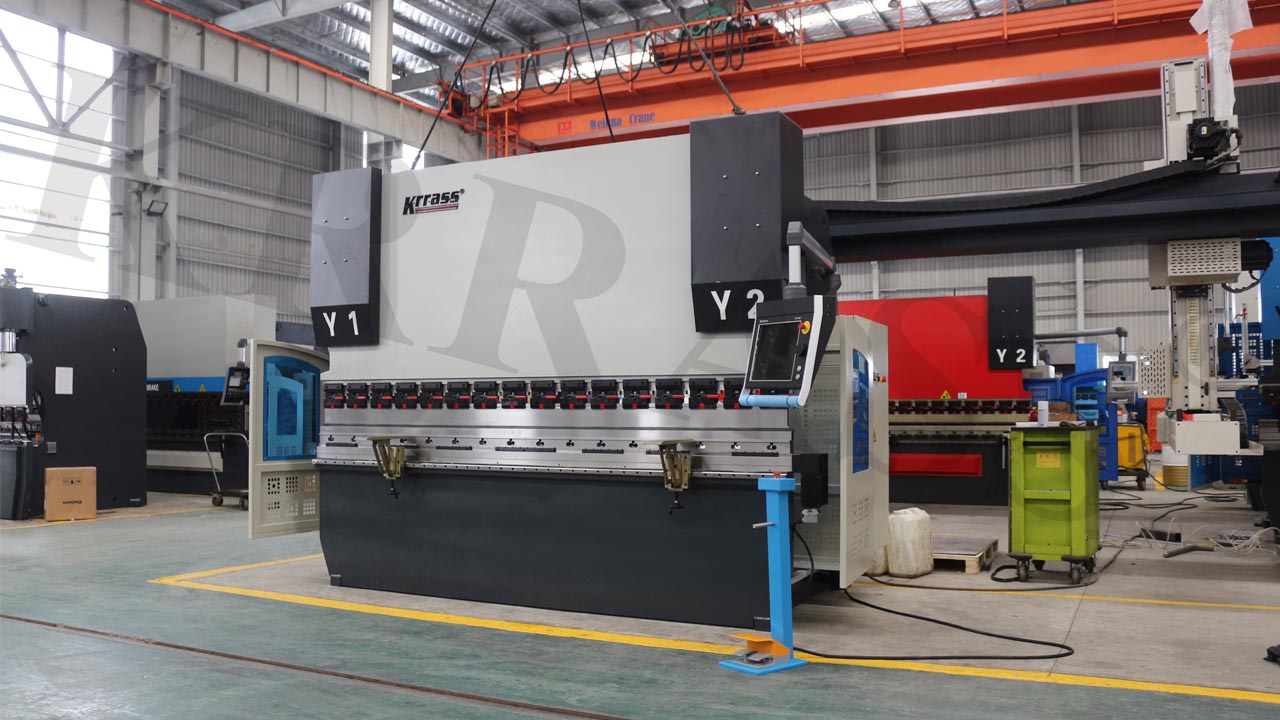
How to Choose the Right Type of Press Brake For Your Needs?
Selecting the optimal press brake hinges on understanding both your present and prospective needs. The market offers an array of press brakes, each with unique features and capabilities. Here's a step-by-step guide to navigate this maze and pinpoint the machine best suited for your endeavors:
Assess Your Core Needs
Begin by identifying the materials you work with most frequently, their thicknesses, and the volume of your production. Are you bending large sheets or small components? How many bends do you perform daily, weekly, or monthly?
Determine Your Budget
While it's tempting to go for a machine with all the bells and whistles, it's vital to strike a balance between your needs and budget. Allocate a budget, but be flexible enough to adjust if a slightly higher investment translates into significant long-term benefits.
Factor in Space and Infrastructure
Evaluate the space available in your facility. Some press brakes, especially hydraulic and tandem ones, need ample space. Also, ensure you have the necessary power and infrastructure to support the machine.
Investigate After-Sales Support
Technical glitches are inevitable. Therefore, consider the manufacturer's reputation, their after-sales support, warranty terms, and availability of spare parts. Reliable support can make or break your productivity.
Consult with the Frontline
Engage with the operators who'll be using the machine daily. Their insights, based on hands-on experience, can offer valuable perspectives on the features they deem most crucial.
Test Drive
If possible, request a demo from the press brake manufacturer. Observing the machine in action provides clarity on its speed, noise levels, ease of use, and other real-world characteristics.
Project Future Growth
A press brake is a long-term investment. Consider where you envision your business in the next 5-10 years. Select a machine that not only addresses your current demands but can also accommodate future growth and diversification.
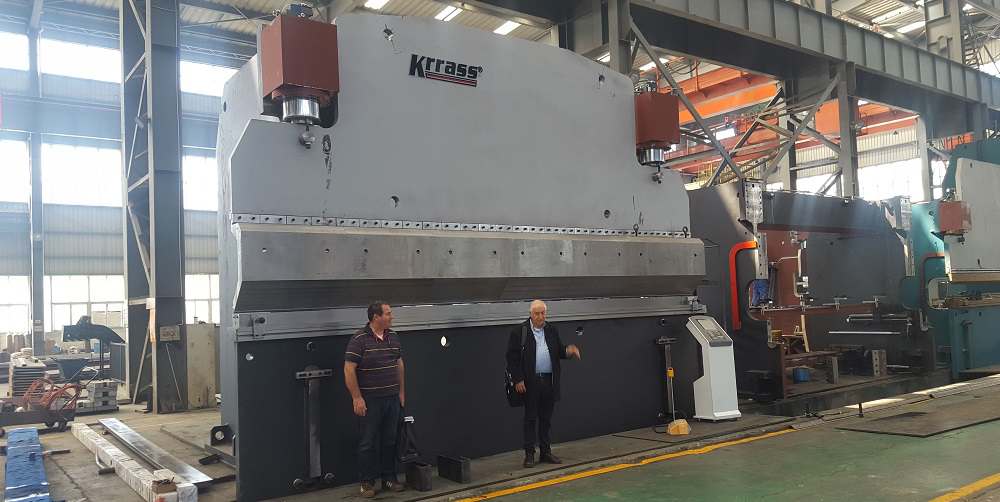
What are the Different Types of Press Brake Bends?
When it comes to bending metal sheets with a press brake, there are several bending methods available. Each bending type offers distinct advantages and is best suited for specific applications. Here, we'll delve into the primary press brake bending methods and offer some insights on selecting the most fitting method for your needs.
Air Bending
Air bending is one of the most common methods, where the metal sheet doesn't touch the die completely. The press brake punch presses the plate into the die's opening, but not to the bottom. As a result, the bend radius is influenced by the die width, the punch tip radius, and the plate material.
Advantages:
- Flexibility in forming different angles using the same die.
- Less force required compared to other methods.
Limitations:
- Angle precision may vary due to material properties.
- Not ideal for achieving sharp angles.
Bottom Bending
In bottom bending, the material is pressed fully against the bottom of the die. This method is preferred when a specific angle and radius are desired.
Advantages:
- Produces consistent and accurate angles.
- Allows for tighter radii than air bending.
Limitations:
- Requires more force than air bending.
- Each die is suited for a specific angle, reducing flexibility.
Coining
Coining involves applying enough pressure to imprint the shape of the tooling onto the material. The result is a sharp, defined bend.
Advantages:
- Produces highly accurate and consistent bends.
- Ideal for producing sharp angles.
Limitations:
- Requires significant force.
- Each tooling is designed for a specific angle, limiting versatility.
How to Choose the Right Type of Press Brake Bend For You?
The selection largely depends on your specific requirements. If flexibility is paramount, air bending might be your go-to. For projects demanding precision and specific angles, bottom bending or coining would be more apt. Always consider the material type, thickness, production volume, and desired bend radius when making your decision.
When in doubt, always consult with your press brake manufacturer or an expert in the field to guide you towards the bending method that's most suited to your project's unique requirements.
Choosing the Best Press Brake
Selecting the right press brake type can significantly impact the quality, efficiency, and profitability of your metal bending tasks. As you make this crucial decision, it's invaluable to partner with industry leaders. Krrass, a leading press brake manufacturer from China, offers a wide range of high-quality machines tailored to diverse needs. Discover more about their innovations and solutions at www.krrass.com.
Read More:
How to Calculate the Bending Allowance of Press Brake
Exploring the World of CNC and CNC Press Brakes
How to Choose the Right Press Brake Tool for Your Press Brake
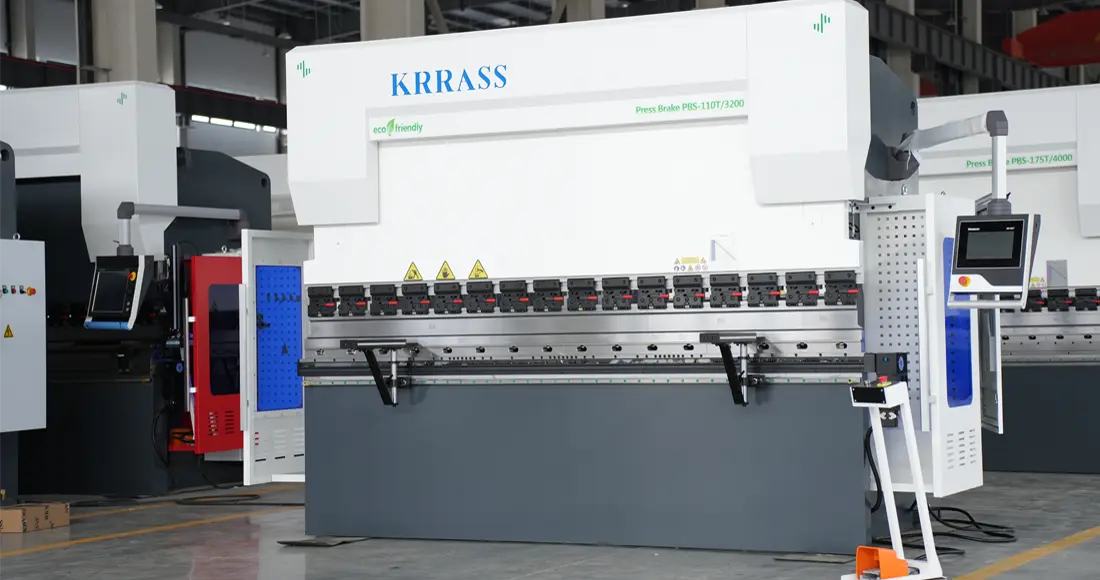
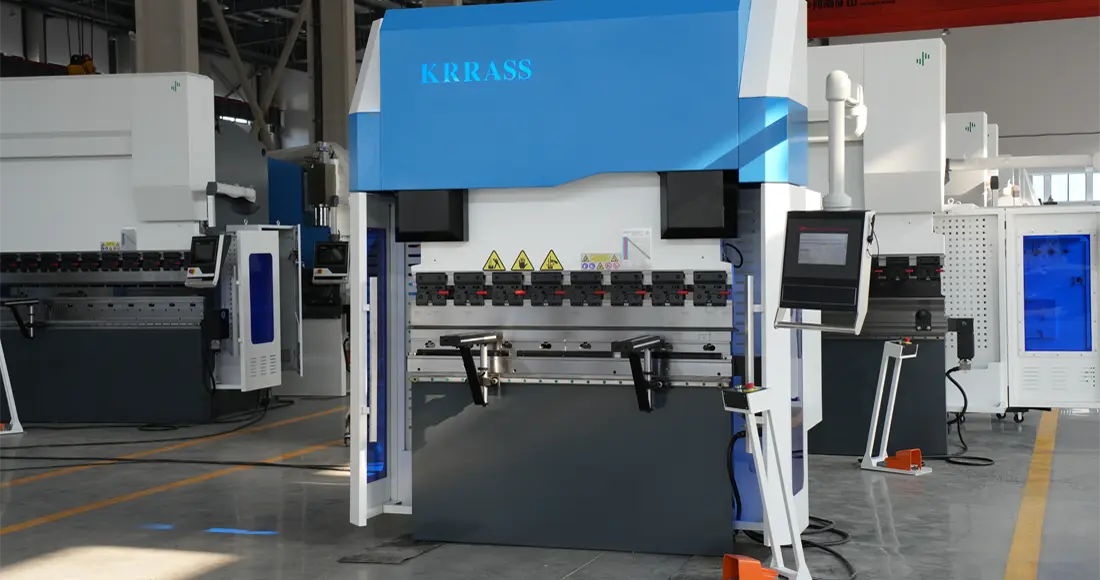
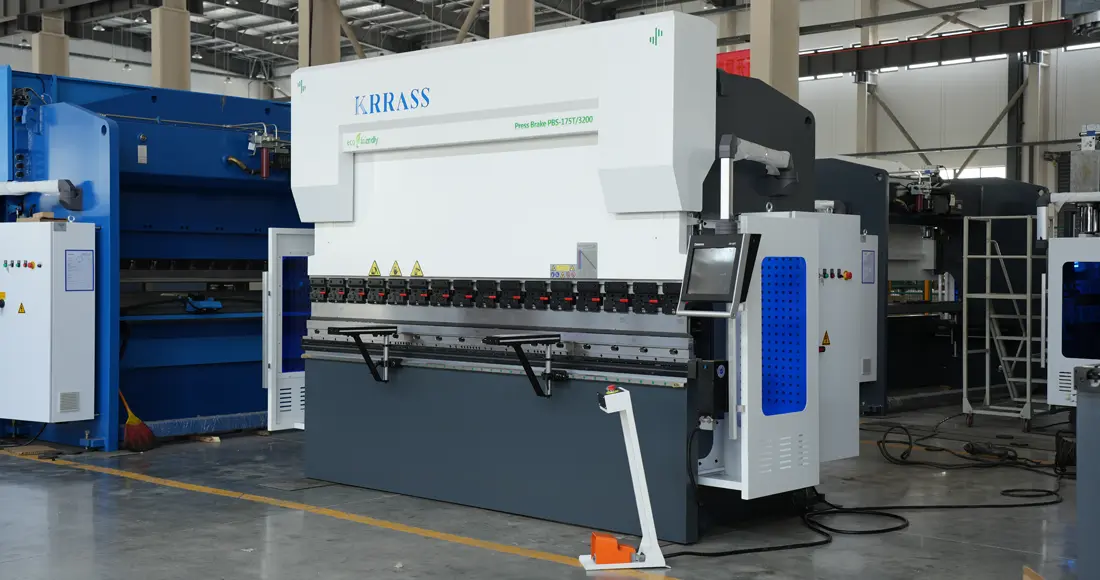





Reviewed by 1 user
cnc press brake
Машины KRRASS очень приветливы в россии, машины стабильны, долговечны и хорошо обслуживаются.